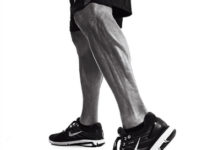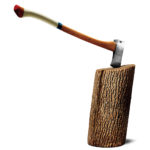Glutes are king as far as the hierarchy of your muscles is concerned. “For athletic performance, overall lower body power, strength, speed, and everyday optimum function, honing strength in and activating your glutes should be a top priority in all exercise programs,” says Robert Reames, C.S.C.S., Gold’s Gym Fitness Institute and Pear Training Intelligence System’s weight control coach.eval(ez_write_tag([[300,250],\’mensjournal_com-under_first_paragraph\’,\’ezslot_4\’,159,\’0\’,\’0\’]));
<!– –>Your glutes serve as the main mover and power output to most of your major and accessory lifts—squat, deadlift, kettbell swings, box jumps—so the more you develop and stimulate your gluteal muscles, the more you’re able to maximize control, strength, and stability. (It doesn’t hurt that women love watching you do leg and glute work in the gym, either.)
eval(ez_write_tag([[250,250],\’mensjournal_com-under_second_paragraph\’,\’ezslot_1\’,167,\’0\’,\’0\’]));Below (in no particular order) are the top glute exercises to incorporate into your fitness regimen. You can mix and match these in multiple combinations for awesome glute and overall lower body work. Sets and reps for each exercise depends on your particular needs, goals, and current abilities. But, 2-5 sets of 8-15 reps is Reames’ general recommendation.
1. Standard bridge (bodyweight or loaded)
How to do it: Lie on your back with your feet planted firmly on the floor, knees bent. If you’re just starting and using your bodyweight, reach your arms straight up over your chest and clasp your hands. If you’re using dumbbells, place the weight (plate, kettlebell, dumbbells) comfortably on your pelvis and hold it steady. To really activate your glutes, thrust your hips up toward the ceiling, driving with your legs, and dig your heels into the floor. Lower your hips until they’re hovering right above the floor level, then repeat.
eval(ez_write_tag([[468,60],\’mensjournal_com-incontent_5\’,\’ezslot_5\’,120,\’0\’,\’0\’]));Expert tip: “You can add a resistance band just above your knee for glute medius activation and/or a Pilates ring above your knees for adductor activation, as well,” Reames suggests.
2. Single-leg bridge (bodyweight or loaded)
How to do it: Lie flat on your back with your feet firmly planted on the floor, knees bent, as if you’re doing a standard bridge. Keeping one foot fixed to the ground, lift the other up, keeping the bend in your knee. Drive your hips up toward the ceiling, driving through your planted leg and using the raised leg to keep your pelvis even and balanced. Don’t let your non-working leg/side drop, Reames advises, and keep emphasizing the heel plant. Lower toward the ground, then repeat.
eval(ez_write_tag([[468,60],\’mensjournal_com-incontent_6\’,\’ezslot_7\’,121,\’0\’,\’0\’]));Expert tip: To make it harder, inch yourself close to a wall so your trunk is about a foot away. Bring what would be your “planted” leg on the wall, foot flat against the surface. From here, raise your “non-working leg” up into the air, keeping your knee bent. As you raise up into the glute bridge, you’ll drive your heel against the wall, raising your hips. You can also use a bench. And like the standard bridge, you can up the ante by adding weight.
3. Ball bridge
How to do it: Begin with your head, neck, and shoulders comfortably fixed against a stability or Swiss ball and both feet firmly planted on the ground, knees bent at 90°. (This is also known as table top position.) Either stretch your arms straight up above your chest with your hands clasped to maximize the balance and stability challenge, or down on either side in case you begin to slip or tip over. As with the other bridge motions, simply lower your hips toward the floor then drive them toward the ceiling. Lower and repeat.
eval(ez_write_tag([[250,250],\’mensjournal_com-incontent_7\’,\’ezslot_6\’,122,\’0\’,\’0\’]));Expert tip: “Try to get your hips parallel to the floor,” Reames says.
4. Bosu bridge
How to do it: Lie on your back with both feet planted firmly against the flat base of a Bosu ball, knees bent. Stabilize your body. If you’re feeling a bit wobbly, your arms can hover on either side of you in case you fall in one direction. If you feel balanced, raise your arms straight up above your chest, hands clasped to challenge and work your stability. Drive your hips toward the ceiling, then lower and repeat.
Expert tip: “Raise your hips to a comfortable range of motion (in general, keeping a neutral spine),” Reames says. You don’t want to hyperextend your lower back.
5. Basic squat
How to do it: In general, your feet should be shoulder-width or slightly wider apart (if you’ve got a bigger frame go wider; if you’re smaller, go closer together), and your feet planted firmly on the floor, driving and emphasizing that heel drive. Stand tall. Depending on your preference or what’s available, hold a dumbbell in each hand (arms down at your sides); position yourself under a barbell with the bar against your traps for a back squat, and just over your chest for a front squat; hold a kettbell or dumbbell at your chest for goblet squats; wrap resistance bands under your feet and around your shoulders; or, use just your bodyweight to perform a basic squat.
Simply bend your knees as you move your glutes back like you’re about to sit in a chair. Keep your spine straight, being careful not to move it too far forward. Your range of motion should come from your hips, knees, and ankles, Reames says. From here, raise up to the starting point and repeat.
Expert tip: “Optimum form and range of motion for the squat is very dependent on your physicality, structure, joint integrity, limb length, strength, flexibility, and current condition,” Reames says. Your range of motion is 90° max at the knee. Some guys will be able to go lower than this, but not everyone will squat to parallel, he says. And that’s totally okay. “Stick to form and the appropriate resistance levels for you; the squat is still one of the best and simplest moves for overall strength, building lower-body muscle, core strength, and athletic performance. eval(ez_write_tag([[468,60],\’mensjournal_com-incontent_9\’,\’ezslot_2\’,124,\’0\’,\’0\’]));
6. 45° leg press
How to do it: Sit comfortably into the leg press machine, pressing your back against the seat and your feet firmly planted to the platform. Lift off and press, straightening your legs so your knees assume a neutral position (not straight or severely bent). Continue lowering the platform until your knees create 90° angles, then return to the neutral starting position and repeat.
Expert tip: “Do not lock or hyperextend your knees—ever,” Reames says. And like squats, don’t force your range of motion. Stay mindful of your strength, flexibility, structure, and current conditioning.
7. Single-leg deadlift
How to do it: Stand tall with a dumbbell in each hand, arms to your sides. Put some slack in your knees so they’re in a neutral position, slightly bent. Extend one leg back; this non-weight-bearing leg should extend straight back until it’s parallel to the floor, while your planted leg remains engaged and planted firmly to the floor. Your weight-bearing knee should be neutral to just slightly bent to avoid hyperextension. Sink your arms toward the floor when you draw your elevated leg back, moving with the flow of gravity. Use your glutes to pull yourself back to the upright position.eval(ez_write_tag([[580,400],\’mensjournal_com-incontent_10\’,\’ezslot_10\’,125,\’0\’,\’0\’]));
Expert tip: Retract your shoulders down your back so they don’t fall forward, Reames says. Also make sure the top of your spine (cervical) stays neutral so your head doesn’t drop.
8. Loaded bench bridge
How to do it: Lie with your back flat on the end of a bench and your feet planted firmly on the ground in front of you, knees bent at 90°. Place a bar (with or without weight) or dumbbells on your pelvis (toward your stomach). Lower your glutes toward the floor, then drive your hips back up to the starting position. Lower and repeat.
Expert tip: Be careful with your range of motion. Hyperextension of your lumbar spine can hurt your lower back, Reames says.
9. Prone hip extension
eval(ez_write_tag([[580,400],\’mensjournal_com-incontent_11\’,\’ezslot_8\’,126,\’0\’,\’0\’]));How to do it: Begin in a quadriped position so your knees and forearms are on the floor. Extend one leg straight out. Lower this working leg toward the floor, moving from your hip joint. Next, raise your leg high—just before you feel any extension in your spine. Alternate sides.
Expert tip: “Other than your working leg, your body should remain stable throughout the motion,” Reames says. To make the move more challenging, strap on ankle weights.
10. Pistol squat
How to do it: Stand tall on one leg with your non-working leg in front of you. Dig the foot of your weight-bearing leg firmly into the floor, and bend your knee as you push your hips back. Lower and try to hit the 90° range of motion at your knee. Return to start and repeat, alternate sides.
Expert tip: “Try to keep your working knee over your ankle so you don’t jet your knee too far forward,” Reames advises. eval(ez_write_tag([[300,250],\’mensjournal_com-incontent_12\’,\’ezslot_9\’,127,\’0\’,\’0\’]));
11. Power Plate squat
How to do it: Firmly plant your feet on the platform of a Power Plate machine, and turn it on to the vibration setting you’re comfortable with. Exercise your full range of motion as you “pulse” by bending your knees slightly at 80-90° in a squat position. “Vibration training uses time under tension, so complete squat pulses for 30-60 seconds,” Reames says. This is one set. Because the Power Plate works by vibrating across three planes: vertical, horizontal, and up and down, your body is forced to make microadjustments, which can improve your strength, power, flexibility, balance, and muscle tone.
12. Standard split squat
How to do it: Begin with one foot firmly planted in front of you with your other leg extended back. Keep balance by putting your weight in the ball of your front foot and the back heel of your back foot. Hold a dumbbell in either hand, arms at your sides. Or, place a resistance band under the foot of your working leg, up, and around the same shoulder. Stand tall and bend your front working leg to approximately 90 degrees, keeping your knee directly over your ankle so it doesn’t over-extend. Return to the start position and repeat. Do both sides.
[RELATED7]
13. Bulgarian Split Squat
How to do it: Place the foot of your working leg in front of you as you would a standard split squat. Place the top of your back foot on a bench or chair behind you. Hold dumbbells to your side. Bend your front knee to approximately 90°, keeping your knee directly over your ankle. Return to the starting position and repeat on both sides. eval(ez_write_tag([[250,250],\’mensjournal_com-incontent_13\’,\’ezslot_11\’,128,\’0\’,\’0\’]));
Expert tip: “Keep your upper body posture strong and aligned throughout the movement,” Reames says.
14. Side-step moving squat
How to do it: Use just your bodyweight, dumbbells, or a resistance band around the top of your knee to activate your glute medius, Reames says. Assume the same setup of a basic squat, feet shoulder-width apart and knees neutral. Squat down, knees bent at 90° angles, and step to the side. Continue repeating this side-step motion down and return to your starting position.
Expert tip: Stay deep in the squat position, taking wide steps to really activate your glutes.
[RELATED8]
15. Stepups
How to do it: Place steps or a plyo platform directly in front of you. The height should be challenging yet appropriate, so you’re not falling. Lean your upper body forward, slightly, and step up, planting your foot and driving the non-working leg up (knee to ceiling). Step back down, then repeat.
Expert tip: “You can work one side first then the other, and/or alternate legs,” Reames says. Keep your upper body leaned forward to incorporate as much weight bearing on each repetition, he adds.

























